My 2025 Marketing Strategy: Trends, Predictions, and How I’m Staying Ahead
Exploring the biggest shifts in advertising, AI, branding, and wearables to shape a smarter marketing strategy for the year ahead.
The marketing world moves fast—too fast sometimes. Every year brings new tools, trends, and challenges, and 2025 is no different. From the rise of AI to the explosion of virtual reality and wearables, the landscape is more dynamic (and overwhelming) than ever.
But let’s get something straight: just because something is trending doesn’t mean you have to chase it. Remember Vine? Clubhouse? Threads? These platforms burned brightly but briefly. Not every trend is worth your time, and the key is knowing what will stick and what’s just noise.
In this article, I’ll break down the biggest trends for 2025, offering insights into what’s worth your time and what to skip. I’ll share a Verdict for each trend—whether you should invest in it or leave it behind. Let’s dive in.
#1. AI: Your New Marketing Assistant (and Possibly Your Competitor)
AI continues to dominate the conversation, and for good reason. It’s transforming how brands interact with audiences, optimize campaigns, and even manage reputations. Case in point: I recently asked ChatGPT to write bios for my company and me to test the accuracy.
Dr. Alexa D’Agostino’s AI-Generated Bio:
“Dr. Alexa D’Agostino is a globally recognized entrepreneur, author, and business strategist known for building seven- and eight-figure businesses across various industries. She’s been featured in top publications and is a sought-after speaker on marketing and innovation.”
Not bad. It captured my highlights, but the tone didn’t quite reflect my authentic personality.
ThynkFuel’s AI-Generated Bio:
“ThynkFuel is a leading digital marketing agency specializing in driving growth through strategic campaigns, data analytics, and innovative branding solutions.”
It’s clear and professional but lacks the human touch that makes ThynkFuel unique. These bios prove that while AI can generate usable content, it needs the right inputs to shine truly. If your brand isn’t well-defined online, AI will misrepresent you.
AI also works wonders for brainstorming and refining ideas. My AI assistant challenges me with questions, helps me spot gaps, and streamlines my workflows. But here’s the thing—AI isn’t replacing marketers; it’s replacing bad marketers. Want to dive deeper? Check out my article on how AI transforms marketing (and who should be worried).
Takeaway: Use AI to enhance your processes and refine your brand. But don’t let it operate on autopilot—it still needs human oversight.
Verdict: Trend—Invest in It!
#2. Advertising: The Rise of DIY Platforms and the Impact on Agencies
Advertising is evolving rapidly. Platforms like Hulu, Reddit, and Paramount enable self-service advertising, which democratizes access and allows businesses of all sizes to run targeted campaigns without needing a large agency budget.
Examples of Businesses Using DIY Advertising
Hulu Ads: A small skincare brand targeted millennials through Hulu’s platform, resulting in a 50% boost in brand awareness.
Reddit Ads: A niche gaming company ran highly focused ads in relevant subreddits, driving conversions at a fraction of the cost of traditional platforms.
Paramount Ads: A regional restaurant chain increased foot traffic by 30% with localized campaigns.
What This Means for Agencies
As businesses take advertising into their own hands, agencies must adapt or risk becoming irrelevant. Agencies now need to:
Specialize in Creative Strategy: Crafting ads that stand out in crowded markets.
Master Analytics: Providing insights that self-service platforms can’t.
Embrace Omnichannel Campaigns: Coordinating efforts across multiple platforms for cohesive messaging.
Takeaway: DIY advertising platforms are leveling the playing field, but agencies that offer creativity and advanced strategy still have a place.
Verdict: Trend—Invest in It
#3. Branding: Back to Basics, But Smarter
Branding in 2025 is all about simplicity and authenticity. Gone are the days of overcomplicated logos and messaging. Today, the focus is on clarity and connection.
Key Trends in Branding
Logos: Clean, minimalist designs with bold typography are trending.
Taglines: Short, impactful phrases that communicate value in seconds.
Websites: Mobile-first designs with intuitive navigation are essential.
Colors: Vibrant palettes balanced with neutral tones for versatility.
Authenticity: Behind-the-scenes content and customer stories are building trust.
Examples of Recent Rebrands
Slack: Simplified their logo for easier usability across platforms.
Burger King: Embraced nostalgia with a retro-inspired rebrand.
Duolingo: Used bold visuals and playful colors to align with their engaging user experience.
Takeaway: Your brand is your reputation. Keep it simple, authentic, and adaptable to stand out in a crowded market.
Verdict: Trend—Invest in It
#4. Social Media: The Year of Volume and Variety
Social media platforms are multiplying, making it nearly impossible to dominate them all. In 2025, the focus is on repurposing content across platforms to maximize reach, but with a twist: it’s not about being everywhere; it’s about being where your audience is.
My advice? Don’t chase the volume game across every platform. Instead, pick a few key platforms where your audience is most active and go all in. For 2025, I’m investing in LinkedIn, Substack, and YouTube. Why? Because that’s where my audience is. These platforms allow me to engage deeply, create meaningful connections, and deliver high-value content tailored to the people I want to reach.
Strategies for Success
Repurpose Smartly: Turn TikToks into Instagram Reels or YouTube Shorts, and break blog posts into Twitter threads.
Test New Platforms Cautiously: Claim your username but wait before investing heavily. Remember Threads? Enough said.
Focus Where It Counts: Double down on the platforms that align with your audience and your goals.
Takeaway: Focus on your core platforms and repurpose content to stay efficient and effective. Prioritize quality over quantity to build meaningful engagement.
Verdict: Trend—Invest in It, Strategically
#5. Podcasts: Evolving, Not Dying
Podcasts have been around for years, and while they’re no longer experiencing the explosive growth of the mid-2010s, they’re far from irrelevant. In fact, podcasts are maturing as a medium, shifting from a gold rush mentality to a more refined and strategic platform for businesses and creators.
What’s Working for Podcasts in 2025?
Niche is King
The days of general, catch-all podcasts dominating the charts are over. Listeners are seeking hyper-specific, niche content tailored to their interests. Whether it’s true crime, industry-specific advice, or hobby-focused deep dives, people want podcasts that speak directly to them. If you’re thinking of launching a podcast in 2025, specificity is key. Pick a niche where you can be an expert, not a generalist.
Video Integration is a Must
One of the biggest shifts in the medium is the rise of video podcasts. Platforms like YouTube push video podcasts hard, offering higher visibility and better engagement opportunities. Audio-only podcasts aren’t obsolete, but the video adds another layer of connection and allows for repurposing content across platforms like Instagram, TikTok, and LinkedIn.
Monetization Beyond Ads
Traditional ad revenue still exists, but savvy podcasters are diversifying their income streams. From Patreon subscriptions to branded merchandise, live events, and premium episodes, creators are finding ways to turn loyal listeners into paying customers.
AI and Podcasts
AI tools are now being used to enhance podcast production. Transcriptions, editing, and even content suggestions are becoming automated, making it easier than ever to launch and maintain a podcast. However, this ease of entry means competition is fiercer than ever.
Collaborations Over Solo Shows
Partnerships and guest appearances are becoming more important for growth. Collaborating with other podcasters or hosting guests with significant followings can introduce your show to new audiences. For businesses, this means thinking strategically about who you bring on as a guest and how their expertise or audience aligns with your goals.
The Challenge: Saturation
There are millions of podcasts out there, and standing out is harder than ever. If you’re entering the podcast space, you’ll need a solid plan to market your show and reach your target audience. SEO-friendly titles, engaging social media snippets, and strategic guest choices are non-negotiables.
Takeaway: Podcasts are evolving, not dying. Podcasts still hold value, but they require more strategy than ever before. If you want to go niche, incorporate video, and diversify your monetization, podcasts can be a powerful tool in 2025.
Verdict: Trend—Invest in It, Strategically
#6. Wearables and Virtual Reality: Finally Having Their Moment
For years, wearables and virtual reality (VR) have been buzzwords, always on the horizon of being “the next big thing.” But let’s be honest: until now, the technology hasn’t quite lived up to the hype. In 2025, that might finally change.
What’s Happening in the Wearables and VR Space?
1. Meta and Ray-Ban Team Up for Smart Glasses
Meta has been making waves with its partnership with Ray-Ban to produce sleek smart glasses. Unlike the clunky VR headsets of the past, these glasses combine functionality with fashion, making wearable tech more accessible and desirable. Features like live streaming, notifications, and augmented reality (AR) overlays make these glasses more practical for everyday use.
2. The NBA Courtside VR Experience
Imagine sitting courtside at an NBA game from your living room. This is now a reality thanks to Meta’s partnership with the NBA. With a VR headset, fans can experience games as if they’re right there in the action, with stunning visuals and immersive sound. This kind of innovation turns passive viewers into active participants, opening up new ways to engage with audiences.
3. Healthcare and Fitness Integration
Wearables like the Apple Watch and Fitbit have already revolutionized personal fitness, but 2025 is taking it to the next level. Devices are now integrating deeper health insights, such as stress monitoring, sleep cycle optimization, and even blood glucose tracking. These advancements mean wearables aren’t just about fitness anymore—they’re about overall health management.
4. Virtual Reality Beyond Gaming
VR has traditionally been associated with gaming, but 2025 is proving its value in other sectors like education, real estate, and employee training. Companies use VR for virtual office spaces, onboarding experiences, and even customer service simulations. VR is becoming a tool for businesses to enhance efficiency and cut costs.
Why 2025 Is the Turning Point
For years, I’ve been skeptical of VR and wearables, saying, “It’s not ready yet.” And honestly, I was right. The tech wasn’t there, and neither was the adoption. But now? The pieces are falling into place. The technology is more user-friendly, the partnerships are more strategic, and the experiences are more compelling.
How Businesses Can Leverage This Trend
Content Creation: Brands can use VR to create immersive experiences. These can include virtual store tours, product demonstrations, or behind-the-scenes experiences that draw the audience into the brand’s world.
Customer Engagement: Wearables can enhance customer experiences by seamlessly integrating apps or services. For example, fitness brands can sync wearable data directly to their apps for personalized coaching.
Training and Development: Companies can use VR to train employees in a risk-free environment on everything from sales techniques to safety protocols.
Challenges to Watch Out For
Cost Barriers
While technology is improving, wearables and VR devices can still be pricey, making them less accessible to certain demographics. Businesses must assess whether their target audience is ready to adopt this technology.
Integration Issues
For wearables and VR to work seamlessly, they must integrate with existing systems. This requires investment in development and compatibility, which can be a hurdle for smaller businesses.
Privacy Concerns
Privacy is a major concern with any tech that collects data. Wearables and VR devices gather a wealth of personal information, and businesses must ensure they handle this data responsibly.
Takeaway: Wearables and VR are finally worth your time. They will go mainstream in 2025. The possibilities are endless, from fitness to entertainment to education. But as with any trend, it’s important to assess how it aligns with your business goals and audience needs.
Verdict: Trend—Invest in It, Smartly
#7. Data Privacy and Security: The Hottest Trend You Can’t Ignore
Data privacy isn’t longer a legal concern—it’s a major competitive advantage. In 2025, privacy and security are taking center stage as industries grapple with new regulations, consumer demands, and the growing complexity of AI integration. If you’re not taking data privacy seriously, you’re not just risking fines—you’re risking your reputation and long-term success.
Why Data Privacy Is More Critical Than Ever
Industry-Specific Pressure
Healthcare, finance, and tech sectors are under intense scrutiny as they digitize services and integrate AI tools. Healthcare providers must secure patient data while using AI diagnostics, and financial institutions face mounting demands for airtight safeguards.Consumer Awareness Is Skyrocketing
Due to high-profile breaches, consumers are increasingly informed about data practices. A 2024 Deloitte study shows that 71% of customers prefer transparent brands about data usage, leaving no room for negligence.Global Regulations Are Tightening
Laws like the EU’s GDPR and California’s CCPA have set high standards. Global regulations are expected to happen in 2025. Businesses failing to comply risk heavy fines and operational setbacks.AI’s Role in Privacy Risks
Generative AI models require vast datasets, creating new challenges in compliance and security. Businesses must scrutinize how AI tools collect, use, and store customer data to avoid potential pitfalls.
How Businesses Can Adapt
Prioritize Transparency
Be clear about what data you collect, why, and how it’s used. Simplify privacy policies with plain language to build customer trust.Invest in Cybersecurity
Make security a top priority. To safeguard your business, use encrypted servers and firewalls and conduct regular system audits.Implement AI Safeguards
Ensure AI tools comply with privacy laws by anonymizing data, securing opt-in consent, and auditing outputs regularly.Leverage Privacy as a Selling Point
Position your commitment to privacy as a competitive advantage. Highlighting strong data practices builds trust and sets you apart.
Privacy Trends to Watch in 2025
Zero-Data Apps
Apps collecting minimal user data are gaining traction, especially among younger, privacy-conscious users.AI Compliance Tools
Automated auditing and consent management platforms are helping businesses ensure AI privacy compliance.Employee Data Focus
With remote work and AI tools rising, securing employee data will be a growing priority.Privacy-Focused Branding
Brands emphasizing transparency and strong privacy efforts will attract trust-driven consumers.
Takeaway: Privacy isn’t just a trend—it’s a necessity. Data privacy is no longer optional. It’s the cornerstone of consumer trust, brand reputation, and long-term success. Prioritize it now to avoid playing catch-up later.
Verdict: Trend—Invest in It, No Questions Asked
#7. Influencer Marketing: Navigating the Complex Landscape of 2025
Influencer marketing is undergoing a significant transformation as we approach 2025. The rise of AI-generated influencers, faceless content creators, and the increasing dominance of shopping influencers are reshaping how brands connect with audiences. Understanding these trends is crucial for businesses aiming to leverage influencer partnerships effectively.
AI-Generated Influencers: The Virtual Frontier
AI influencers, or virtual influencers, are computer-generated personas that interact with audiences much like human influencers. These digital entities are gaining traction due to their ability to produce consistent content and maintain a controlled brand image. Brands use AI influencers to engage with tech-savvy consumers and explore innovative marketing strategies.
Advantages:
Consistency: AI influencers can deliver content without the unpredictability associated with human behavior.
Scalability: They can engage with multiple audiences across various platforms simultaneously.
Innovation: Utilizing AI influencers positions a brand as forward-thinking and technologically adept.
Considerations:
Authenticity: The lack of genuine human experience can lead to perceptions of inauthenticity.
Engagement: Audiences may prefer relatable human influencers over virtual ones.
Ethical Concerns: Using AI influencers raises questions about transparency and consumer manipulation.
As AI technology advances, the lines between human and virtual influencers are blurring, challenging traditional notions of authenticity in influencer marketing.
Faceless Content Creators: Anonymity Meets Influence
Faceless content creators produce engaging material without revealing their identities. This trend is particularly prevalent on platforms like TikTok and YouTube, where creators focus on content quality rather than personal branding.
Advantages:
Focus on Content: Audiences engage with the material without biases about the creator’s identity.
Privacy: Creators maintain personal privacy while building an online presence.
Versatility: Faceless accounts can adapt content styles without conflicting with a personal brand image.
Considerations:
Trust Building: Anonymity can make it challenging to establish trust with audiences.
Brand Partnerships: Brands may hesitate to collaborate without knowing the creator’s identity.
Engagement Levels: Some audiences prefer personal connections, which can be harder to achieve without a face to the content.
Faceless user-generated content (UGC) is gaining popularity. Creators produce product unboxing videos, tutorials, and reviews without appearing on camera, focusing attention solely on the products.
Shopping Influencers: The New Age of Social Commerce
Shopping influencers specialize in promoting products through their platforms, effectively bridging the gap between social media and e-commerce. Platforms like TikTok have amplified this trend, with influencers hosting live shopping events and integrating direct purchase links into their content.
Advantages:
Direct Sales: Influencers can drive immediate purchases through integrated shopping features.
Authentic Recommendations: Personal endorsements can enhance consumer trust and conversion rates.
Interactive Engagement: Live shopping events allow real-time interaction, enhancing the shopping experience.
Considerations:
Disclosure: Transparency about sponsored content is essential to maintain trust.
Market Saturation: Increasing shopping influencers can lead to consumer fatigue.
Content Quality: Over-commercialization may detract from content authenticity and audience engagement.
Social commerce is set to become a powerhouse in influencer marketing. It blends entertainment with e-commerce to create seamless, immersive shopping experiences. Platforms like TikTok are enhancing their live-streaming features to allow influencers to showcase products in real-time, enabling viewers to purchase directly through integrated shopping tools.
Predictions for 2025
Integration of AI and Human Influencers: Expect collaborations where AI influencers and human creators co-produce content, merging authenticity with innovation.
Enhanced E-commerce Features: Platforms will continue to develop tools that facilitate seamless shopping experiences directly from influencer content.
Regulatory Developments: Anticipate stricter guidelines governing transparency and ethical considerations in influencer marketing.
Diversification of Influencer Platforms: Emerging platforms will offer new opportunities for influencers to engage with niche audiences.
Takeaway: As influencer marketing evolves, brands must stay informed about these trends to navigate the complex landscape of 2025 effectively. Strategic partnerships, authenticity, and adaptability will be key to leveraging the full potential of influencer collaborations in the coming years.
Verdict: Trend—Invest in It, Strategically
#8. The Return to In-Person Connections: What It Means for Your Marketing Strategy
The pendulum is swinging back. After years of virtual everything—meetings, conferences, events—2025 is shaping up to be the year we meaningfully return to in-person interactions. Companies are encouraging employees to return to the office, hybrid work models are becoming the norm, and events are filling calendars like it’s 2019. But what does this shift mean for marketing?
Proximity Marketing: Making Every Moment Count
As more people embrace in-person connections, proximity becomes a critical factor in how we interact and engage. Proximity marketing, or hyper-local marketing, takes advantage of physical presence to deliver timely, relevant messages or experiences. Think about attending a conference or an industry meetup—how can you maximize those moments?
This is where tools and apps come into play. For example, Thr-app, an emerging platform, lets you see where your professional contacts are and what micro-events are happening nearby. Imagine landing in a city for a client meeting and realizing three key contacts are within walking distance. You could plan a lunch, a coffee meeting, or even a quick drop-in, all without wasting time or missing opportunities. Strategic planning for in-person interactions will be more critical than ever.
The Importance of Micro-Events
The days of massive conferences with thousands of attendees might not go away entirely, but micro-events—smaller, more curated gatherings—are gaining traction. These events allow for more meaningful connections and deeper conversations. Whether it’s a networking breakfast, an intimate workshop, or a pop-up event, the focus is on quality over quantity.
Marketers can leverage this trend by creating their own micro-events or sponsoring smaller gatherings in their industry. These settings allow brands to connect with audiences in a more personal, impactful way, creating lasting impressions.
Blending Physical and Digital Experiences
While in-person experiences make a comeback, they are not entirely replacing digital experiences. Instead, the two are merging. Think hybrid events with live streaming options or apps that enhance in-person interactions with real-time updates and networking tools. The key is to seamlessly blend physical and digital, ensuring you meet your audience where they are—whether in the room or on their screens.
What It Means for Your Marketing Strategy
Plan Strategically: If you’re traveling for work, use tools like Thr-app to map out who you can meet and what events you can attend. Make sure to maximize every trip with a clear plan to maximize your time.
Invest in Localized Campaigns: Localized marketing efforts will become more important as people move around more. Geotargeted ads, city-specific promotions, and partnerships with local influencers or businesses can give your brand an edge.
Host or Attend Micro-Events: To create opportunities for meaningful interactions, organize or attend smaller, more targeted gatherings. Focus on building real connections rather than casting a wide net.
Prepare for Hybrid: If you’re hosting an event, ensure it has both in-person and digital components. This not only widens your reach but also accommodates attendees who may not be ready or able to show up in person.
Revisit Office Strategies: For B2B marketers, returning to the office means rethinking how you reach decision-makers. Office drop-ins, lunch-and-learns, and physical mailers might make a comeback as effective tools.
Takeaway: Connection is key. The return to in-person interactions offers a chance to strengthen connections in a way that virtual meetings never could. However, this requires intentionality. You can make the most of this trend by strategically planning your time, leveraging proximity tools, and blending physical with digital.
Verdict: Trend—Invest in It, Strategically
Wrapping It All Up: My 2025 Marketing Strategy
2025 is shaping up to be one of the most dynamic and exciting years in marketing we’ve seen in a long time. From AI reshaping how we strategize and communicate to wearables and VR finally becoming more than buzzwords and even returning to in-person interactions, the landscape is as complex as it is full of opportunity.
But here’s the real takeaway: you don’t have to chase every trend. In fact, the key to success in 2025 isn’t about doing more; it’s about doing the right things. It’s about knowing your audience and business goals and focusing your energy on the strategies that will move the needle.
The trends I’m investing in—AI, wearables, branding simplicity, and personalized in-person connections—are grounded in where I see the biggest opportunities for growth. These aren’t just trends; they’re shifts in how we communicate, connect, and create value. On the other hand, some things—like spreading yourself thin across every new platform or chasing untested ideas—aren’t worth the time or effort.
Let’s also not forget the importance of foundational elements: strong branding, authentic storytelling, and meaningful connections. These timeless principles will always outlast the hottest trend or latest tool. A well-built foundation means that when a trend does come along, you’ll be better positioned to capitalize on it.
Finally, remember that marketing in 2025 is a marathon, not a sprint. You don’t have to jump into everything headfirst. Observe, test, and refine. Be intentional about your strategies, and always keep your eye on the long game.
What This Means for You
Invest Wisely: Choose trends that align with your audience and goals, and don’t overextend yourself.
Balance is Key: Find the balance between leveraging cutting-edge tools and sticking to the fundamentals.
Stay Authentic: In a world of AI and automation, authenticity is your most valuable asset.
Be Flexible: The only constant in marketing is change. Stay agile and be ready to adapt as the year unfolds.
2025 allows you to lead, innovate, and make meaningful connections with your audience. How will you leverage these trends to propel your business forward? Let’s make this the year we not only keep up but get ahead—and stay there.
Let’s keep the conversation going. Subscribe to my newsletter to get weekly insights on marketing, entrepreneurship, and what’s next.
Let’s build smarter, connect deeper, and achieve more this year.
I’d love for you to join me on this journey. My newsletter isn’t just about tips and strategies—it’s about real talk, hard-earned lessons, and the behind-the-scenes stories of what it takes to build a business and a life you love.
Whether you’re just starting or scaling new heights, I want this space to be a source of inspiration, guidance, and a little humor along the way. So, what do you say? Let’s navigate this wild ride of entrepreneurship together.
What You’ll Get When You Subscribe:
💡 Weekly insights on building a business from scratch.
🛠 Proven strategies to scale your revenue and impact.
📚 Lessons from my personal journey—what worked, what flopped, and what surprised me.
🕒 Tips on setting boundaries and achieving freedom in your life and work.
🔥 Motivation to keep you pushing toward your next big win.
Take the first step toward leveling up—Subscribe Now!


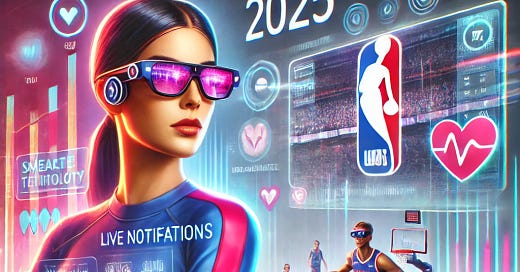



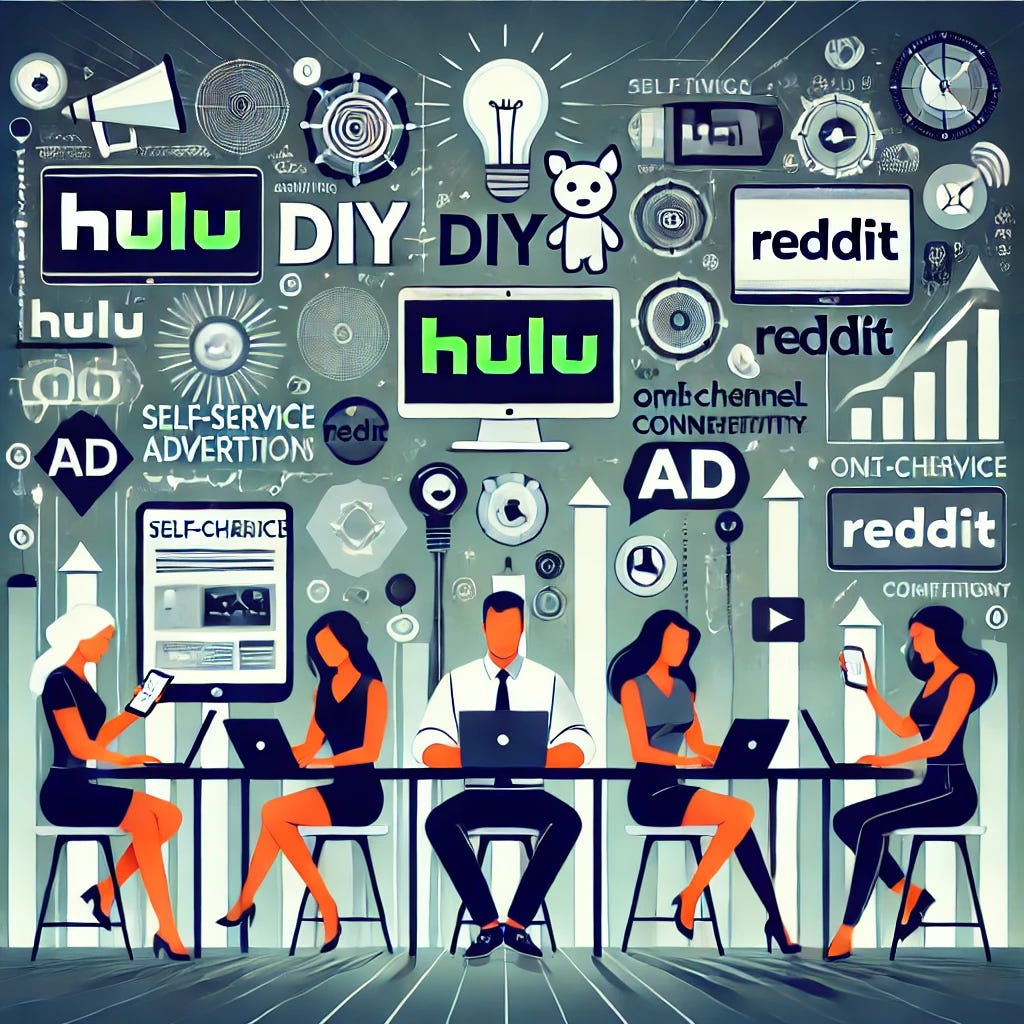
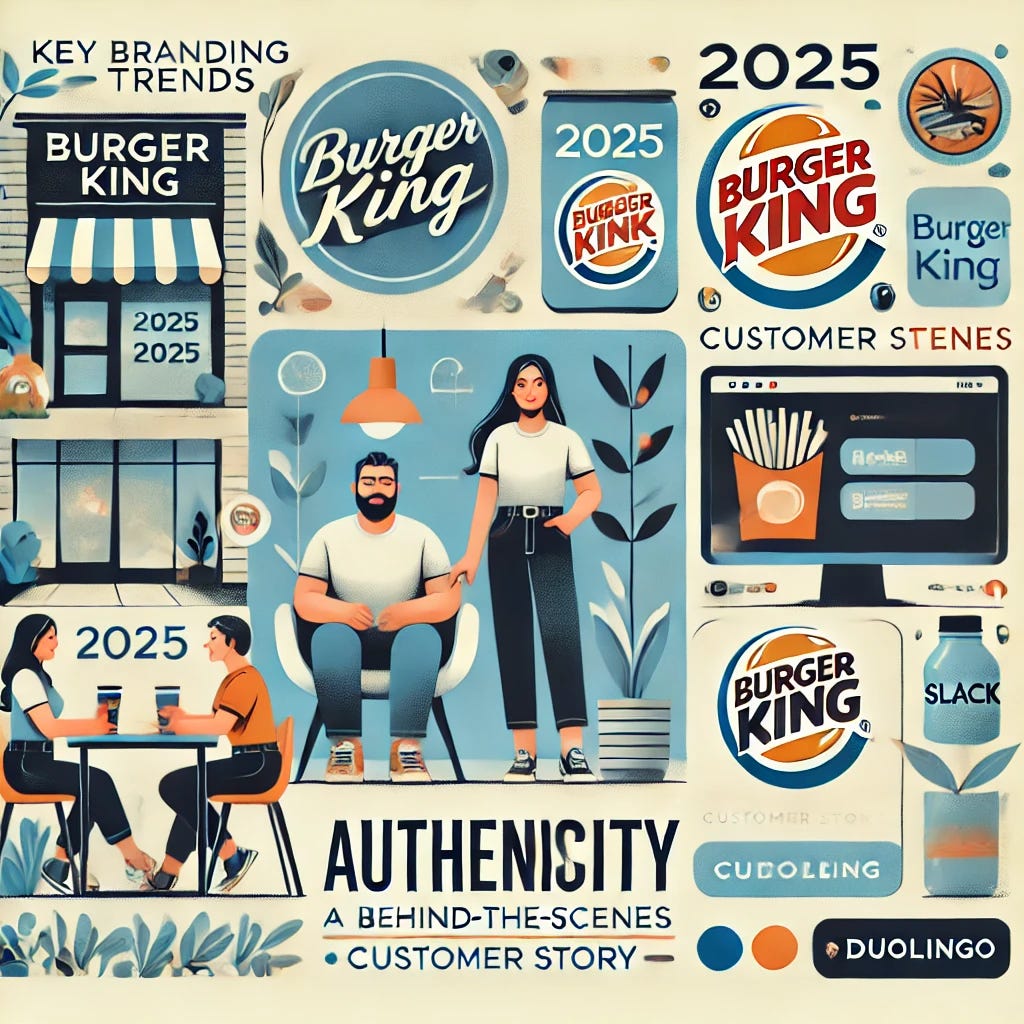
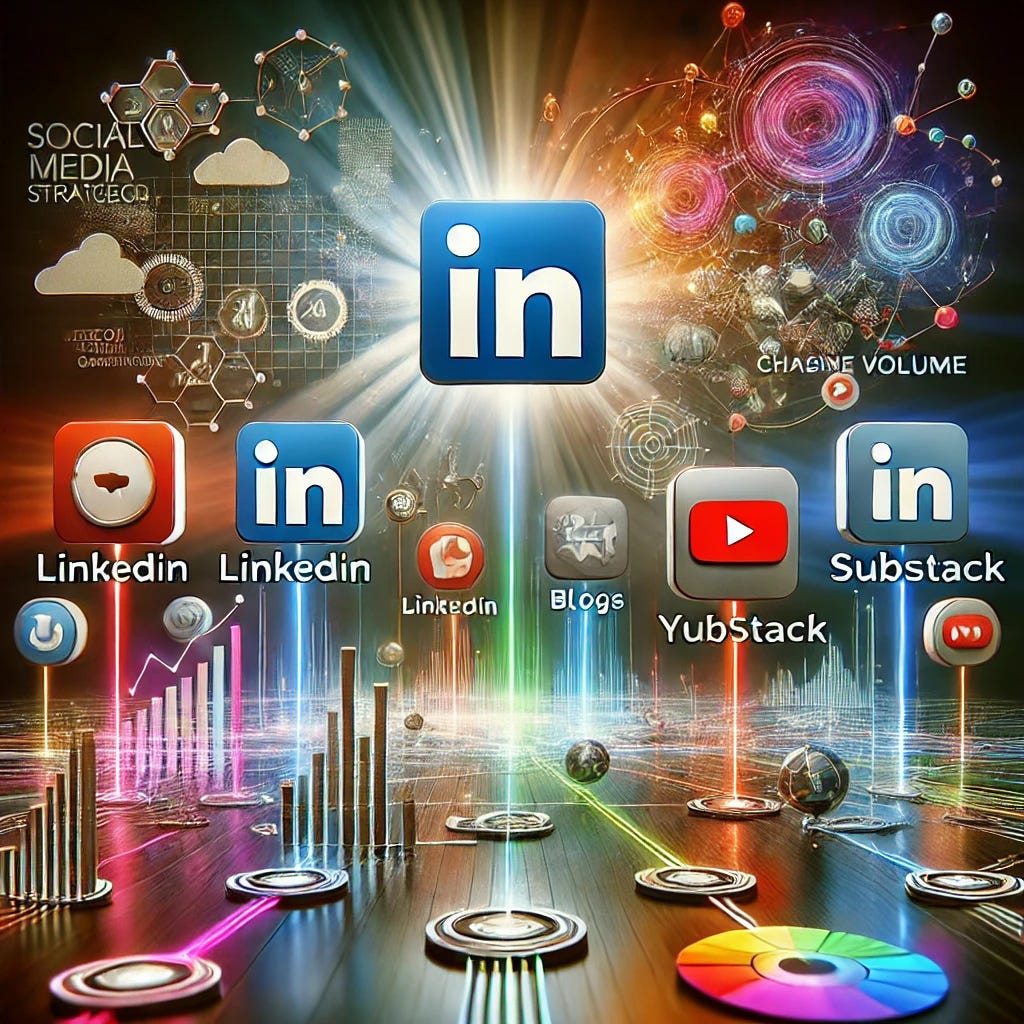



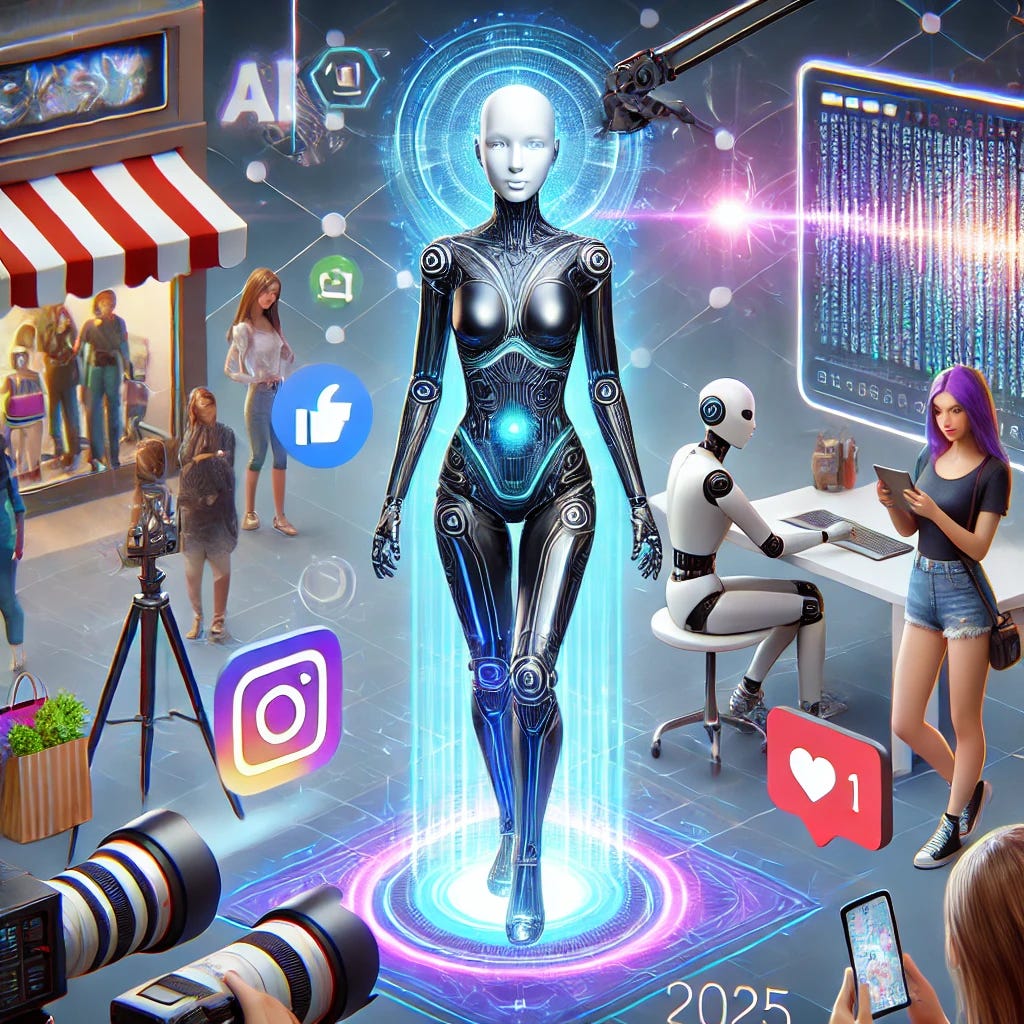
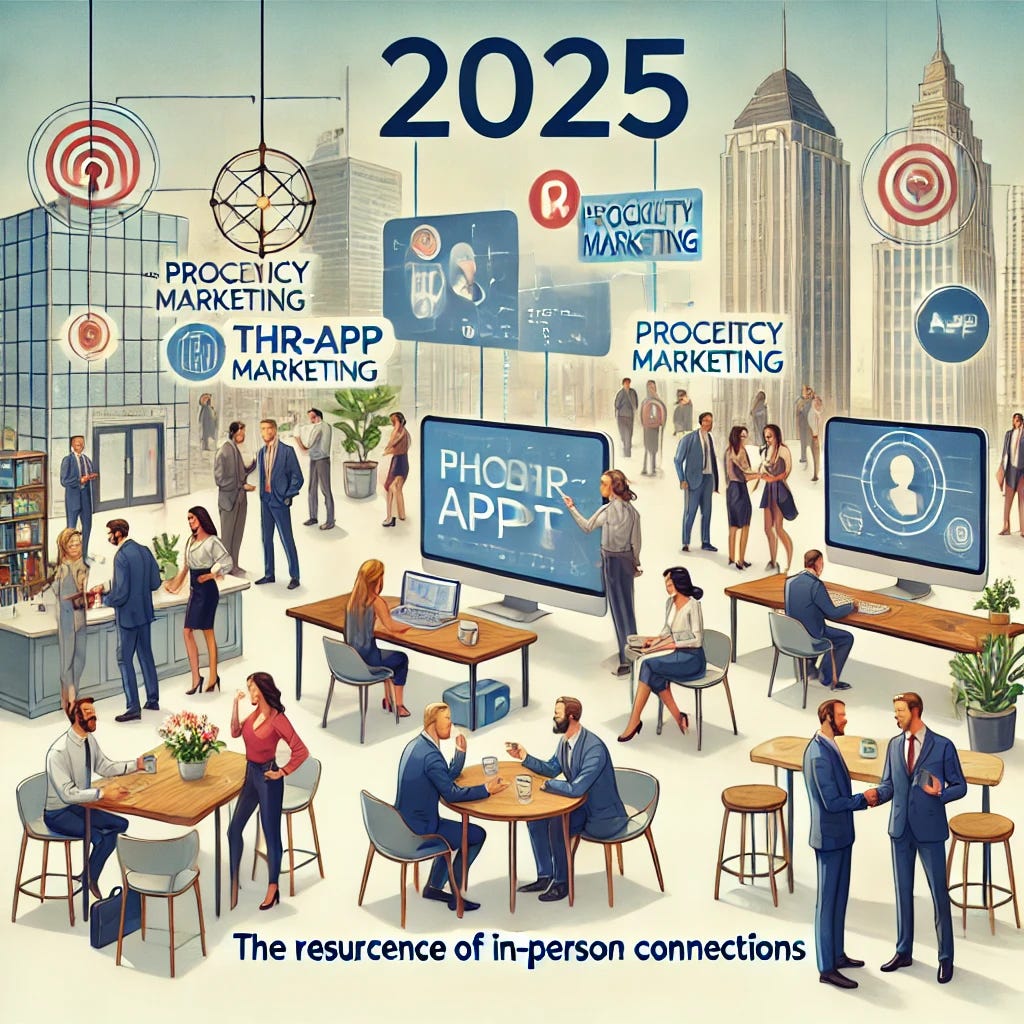
Nicely done. Happy New Year!
Interesting article, AI is certainly facilitating my life when it comes to writing but as you wrote, it needs supervion... sometimes it's really stupid!